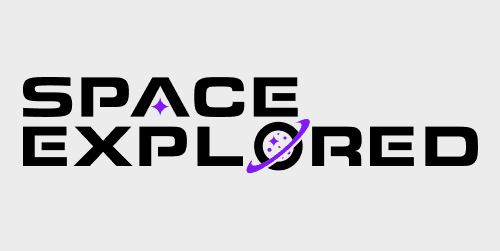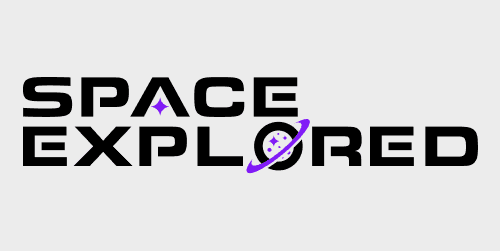
With the first launch of SLS for the Artemis 1 mission closer than ever before, we want to take a look back at the testing that has gotten us to this point. The most recent test being the Umbilical Release and Retract Test (URRT).
The Space Launch System (SLS) rocket will be one of the most powerful rockets ever flown. Based on legacy hardware from the Shuttle days with the aspirational dream of saving money and new fabrication techniques and technologies. With the final tests before launch nearing completion, we want to take you back through some of the major tests that have been done. From the Green Run to SRB Qualifications.
Solid Rocket Booster Testing
As is true with every new rocket, the pieces that make them up are tested and qualified for flight. The Solid Rocket Boosters (SRBs) that will be strapped onto SLS can trace their heritage back to the Space Shuttle. The primary difference between the Shuttle SRBs and the SLS SRBs is how big they are. The Shuttle SRBs were four-segment boosters, while the SLS SRBs are five-segment boosters. When Orbital ATK, now Northrup Grumman, built these new boosters for SLS, they had to undergo qualification testing. QM-2 (Qualification Motor 2) was the final test of the SRBs before the first launch of SLS.

Core Stage Green Run
The main centerpiece of SLS is the core stage. Featuring four refurbished RS-25s from the Shuttle days, this vehicle stage is essentially a stretched External Tank from the Space Shuttle system. It is even powered by RS-25s that flew on shuttles! The Liquid Hydrogen and Oxygen tanks were assembled at the Michoud center in Louisiana, along with the integration of the RS-25s. From there, the assembled core stage was shipped to Stennis Space Center and placed onto the B Test Stand. This is where the core stage conducted both of the Green Run static fires.
Notice how I said both static fires. The initial plan was to conduct just one test, however, there was a software issue that lead to the first test getting cut short. NASA then decided to conduct another firing to complete all the goals of the Green Run test. Once the second test was completed and a data review showed that the stage performed well, it was shipped off to Kennedy Space Center.
Integration Testing

While the Green Run testing was happening, teams at Kennedy Space Center were in the process of stacking the SRB segments on the mobile launchpad. While there was uncertainty about a second Green Run test, this operation paused briefly, as the seals on fully stacked SRBs have a limited lifespan. By the time the core stage arrived at KSC, the SRBs were fully stacked. To save some time, core stage refurbishment took place in the Transfer Aisle inside the VAB. Shortly thereafter, the core stage was lifted and integrated into the stack. The Launch Vehicle Stage Adapter and Interm Cryogenic Propulsion Stage followed.
At this point, NASA teams were gearing up for a power-on test. This test would make sure that all the subsystems and computers aboard SLS would communicate properly. This was a major milestone. Issues at this point could have been disastrous for the schedule. Luckily, everything worked as intended. Teams then added a stand-in for the Orion Stage Adapter and a mass simulator for Orion and the European Service Module.
Modal (Vibration) Testing

Vibrations are a major deal with any rocket, so understanding how a rocket reacts to certain frequencies and vibrations is important to a successful mission. Outfitted with around 300 sensors, SLS underwent testing to analyze how the rocket and surrounding structure reacted to vibrations. During this test, seven hydraulic shakers were placed around the rocket and technicians would also use small hammers to tap in certain locations. All this data was recorded by the sensors and would be compared against the computer models and predictions. These same sensors will also be recording data while SLS is rolled out to and is at LC-39B to record even more data on the natural harmonics of the vehicle.
Umbilical Release and Retract Test
This is the most recent test. Completed Sunday, September 19th, the Umbilical Release and Retract Test tested all the umbilical arms on the mobile launch platform. This test demonstrated all the systems needed to support a successful liftoff of SLS.
Wet Dress Rehersal

The next major milestone for SLS will be the Wet Dress Rehearsal. Expected to occur around November 22, SLS will be fully fueled and teams will conduct a practice launch countdown. This will stress every system and prove that SLS and its teams are prepared for launch. As mentioned in the modal section, the vibration sensors will be active during this test. They will also measure how the vehicle sways in the wind, something that can’t be tested inside the VAB.
SLS avionics will also get their own test while out at LC-39B. The avionics uses a variety of sensors (Accelerometers, Gyroscopes, Magnetometers, etc). One thing these sensors can detect is the drift from an initial position due to the Earth’s rotation. This test involves commanding the engines to gimbal as if to correct for the Earth’s rotation. It’s a simple test but demonstrates the system’s End To End functionality and ensures the engines gimbal in the proper direction to steer SLS. This test is expected to occur two times – once in the VAB and once at LC-39B.
We haven’t received confirmation if Orion will be integrated before or after the WDR at this time. However, NASA says the media will get to see the Orion and SLS full-stack around mid-October. Given that the WDR isn’t expected until late November, it seems more likely that Orion will be integrated.
Orion Launch Escape System Testing
While SLS has received its fair share of testing, so too has Orion. One of the crucial safety systems for Orion is the Launch Escape System (LAS). This system has undergone component testing and full-blown system tests. The above video shows the final test of the attitude control motor that occurred on February 25th, 2020. Along with these individual motor tests, end-to-end tests have also been completed. A Pad Abort test was conducted in 2010 and the Ascent Abort 2 test was conducted in 2019.
Want to help support Space Explored?
Directly support Jared by joining his Patreon (recurring support), or donate through Ko-Fi (one-off support)
Shop on Amazon to support Space Explored Writers.
Enjoy reading Space Explored?
Help others find us by following on Apple News and Google News. Be sure to check us out on YouTube, Twitter, Facebook, and Instagram, join our Discord!
FTC: We use income earning auto affiliate links. More.




Comments